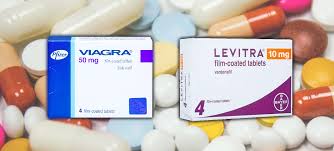
Eliquis: A Comprehensive Guide to Its Use and Benefits
Eliquis is a prescription medication commonly used to prevent blood clots and reduce the risk of stroke in patients with certain conditions. Eliquis https://lekarnaskupaj.si/kupi-eliquis-online-brez-recepta/ Understanding its mechanism, benefits, and potential side effects is crucial for both patients and healthcare providers.
Introduction to Eliquis
Eliquis (apixaban) is an anticoagulant medication that falls under the category of direct factor Xa inhibitors. This means it works by inhibiting the activity of factor Xa, a key protein in the blood clotting process. By blocking this protein, Eliquis helps to prevent the formation of harmful blood clots, which can lead to serious conditions such as stroke or deep vein thrombosis (DVT).
Indications for Use
Eliquis is primarily indicated for the following medical conditions:
- Prevention of stroke and systemic embolism in patients with non-valvular atrial fibrillation.
- Treatment and prevention of DVT and pulmonary embolism (PE).
- Reduction of the risk of DVT and PE after orthopedic surgeries, such as hip or knee replacements.
How Eliquis Works
The anticoagulation effect of Eliquis is achieved through its action on factor Xa, an enzyme that plays a central role in the coagulation cascade. By inhibiting factor Xa, Eliquis effectively reduces the concentration of thrombin and fibrin formation, which are crucial for clot development. This mechanism helps maintain normal blood flow and reduces the risk of clot-related complications.
Dosing and Administration
Eliquis is typically taken orally in the form of a tablet. The dosage varies depending on the specific condition being treated and the patient’s individual characteristics. It is important to follow the dosing instructions provided by a healthcare provider. Generally, the recommended dose for most indications is:
- 5 mg taken twice daily for non-valvular atrial fibrillation.
- 10 mg taken twice daily for the first week for DVT or PE treatment, followed by 5 mg twice daily.
Patients should not discontinue Eliquis without consulting their healthcare provider, as abrupt cessation may increase the risk of thromboembolic events.
Benefits of Eliquis

One of the key advantages of Eliquis is its favorable pharmacokinetic profile. Unlike several older anticoagulants, Eliquis does not require routine monitoring of blood levels, making it more convenient for both patients and healthcare professionals. Additionally, patients on Eliquis experience a lower risk of bleeding complications compared to those on traditional therapies such as warfarin. This makes Eliquis a preferred choice for many patients needing anticoagulation therapy.
Potential Side Effects
While Eliquis is generally well-tolerated, patients may experience some side effects. Common adverse reactions include:
- Bleeding complications, which can be serious.
- Nausea and gastrointestinal discomfort.
- Allergic reactions, although rare.
Patients should be aware of the signs of bleeding, such as unusual bruising, prolonged bleeding from cuts, blood in urine or stool, and should seek medical attention if they experience these symptoms.
Drug Interactions
It is crucial for patients to inform their healthcare provider about all medications they are taking, including over-the-counter drugs and supplements. Certain medications can interact with Eliquis, increasing the risk of bleeding or reducing its effectiveness. Notable drug interactions include:
- Other anticoagulants (e.g., warfarin, rivaroxaban).
- Non-steroidal anti-inflammatory drugs (NSAIDs).
- Some antibiotics and antifungal medications.
A thorough review of the patient’s medication list can help mitigate any potential interactions.
Considerations and Precautions
Before starting treatment with Eliquis, it is essential for patients to discuss their medical history with their healthcare provider. Conditions that may require special consideration include:
- History of bleeding disorders.
- Severe liver or kidney impairment.
- Active or recent gastrointestinal bleeding.
Pregnant and breastfeeding women should also discuss the potential risks and benefits of using Eliquis with their healthcare providers.
Conclusion
Eliquis is a significant advancement in anticoagulation therapy, providing effective treatment and prevention of blood clots while minimizing the need for frequent monitoring. Understanding its uses, benefits, and potential risks is crucial for patients and healthcare providers alike. Always consult a healthcare professional for personalized medical advice and before starting any new medication.
Further Reading
For additional information on Eliquis, its uses, and patient experiences, consider consulting credible medical websites or your healthcare provider.
